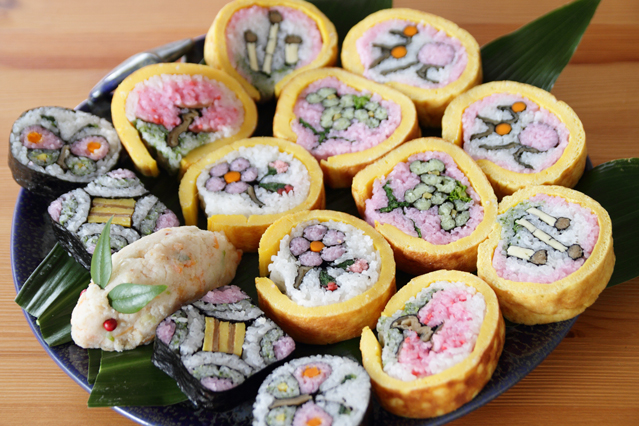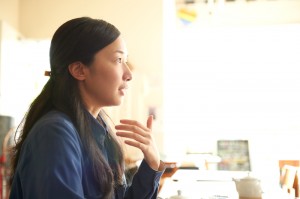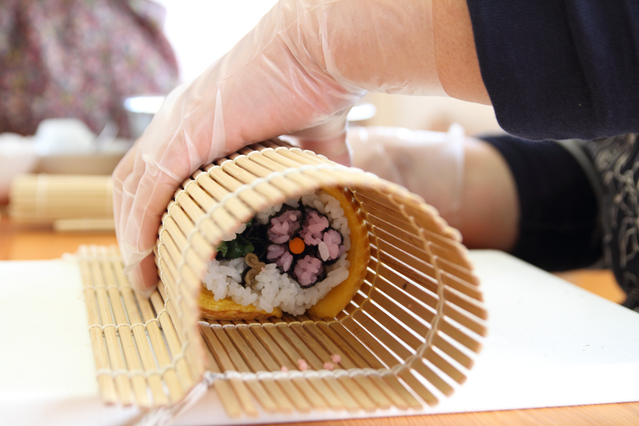Celebrate Spring with Futomaki Sushi: Traditional Festival Sushi in Kamogawa
Mar 06,2015
Celebrate Spring with Futomaki Sushi: Traditional Festival Sushi in Kamogawa
Mar 06,2015
In this irregular series, food culture researcher Kiyoshi Aya describes the local delicacies and ways of life she has encountered in different places throughout Japan.


For this article, Kiyoshi gives us an account of futomaki matsuri-zushi — thick festive sushi rolls — from Kamogawa, a town near the southeastern tip of the Boso Peninsula in Chiba prefecture. Boso Peninsula is dotted with towns where making futomaki-zushi [thick sushi rolls] is a long-held custom, and Kamogawa, known as a producer of Nagasa rice, is one of them. For generations, futomaki matsuri-zushi have been made in this area for the annual yabusame [horseback archery] festival at the Kippo Hachiman Shrine as well as to mark Momo no Sekku [Peach Festival on March 3], cherry blossom viewing, new school-year ceremonies, and other annual and family events. Futomaki matsuri-zushi are well known for their gorgeous and endearing designs.
“The designs originally were mostly simple geometric patterns or flowers. But today there is an enormous variety, including canola flowers, horsetails, sunflowers, and Christmas trees. There are contests for the best futomaki-zushi, and people are still coming up with new designs and varieties.”
Another change is who makes the sushi rolls. In the past, men who were experts at making futomaki-zushi in the community used to show off their skills at every local event. But since World War II, local women’s groups have taken over this role.
Futomaki-zushi are created with ingredients such as nori seaweed, eggs, kanpyo [dried gourd shavings], and mashed denbu fish that are rolled up in vinegared rice. Common ingredients like these found everywhere are used to form each individual leaf, petal, and other parts, which are then carefully assembled together. The parts are tightly rolled up and then chopped with a knife to reveal finally, in a flash, the colorful and charming cross-sections that only futomaki matsuri-zushi have. I figured it must take quite a while to make them, but when I asked Kiyoshi, she replied: “All the women in these groups are experienced and can finish a complete roll in about 15 minutes. They are very agile and talented.”



Futomaki matsuri-zushi are popular for their florid and cute designs, and the techniques for making them are taught to younger women at workshops and other gatherings. A large part of the success of these cultural transmissions is due to the tremendous efforts of Ryuzaki Eiko, who leads the Chiba Traditional Local Cooking Association. Ryuzaki became fascinated with Chiba’s futomaki-zushi when she learned of their existence in the 1950s and traveled around to visit futomaki-zushi makers all over the Boso region. At the time, the number of futomaki-zushi makers was dwindling, so she decided she had to do something to prevent futomaki-zushi from dying out. That’s when she began actively teaching younger generations about the techniques and designs she had learned.
Kiyoshi described Ryuzaki’s significance. “Across the country, fewer people are making local delicacies and many of these delicacies have become harder and harder to find. But futomaki matsuri-zushi are one of a handful of examples of a local delicacy that is being passed on to younger generations in large numbers. This is thanks to Ryuzaki, who has proactively communicated the tradition through workshops and other activities. Local communities have also helped by promoting the tradition through contests and other events. And some of the popularity is because young women are naturally drawn to the pretty designs. Another factor that perhaps explains the success of futomaki matsuri-zushi in particular is that promotors have made sure people know there are few rules dictating how they should be made. People can enjoy making the rolls however they like, such as using cheese and other modern ingredients, fashioning new original designs, or giving a contemporary twist to their arrangements. This flexibility might be something to remember when passing on local delicacies to future generations.”
Futomaki-zushi are popular among kids too, and they are now taught in cooking classes at the prefecture’s elementary and junior-high schools.


“Futomaki matsuri-zushi are widely recognized as a local Chiba delicacy. It is, of course, the hope of all local communities that through one well-known local delicacy, people will become interested in other dishes and cuisine from the same area. Various ways of passing on local cuisine are being explored, but the example of futomaki matsuri-zushi is a very promising one. I hope it will continue to be a local delicacy prized by many people.”
As we enjoy the arrival of spring, with Momo no Sekku, cherry blossom viewing, and new school-year ceremonies, many splendid futomaki matsuri-zushi are sure to be rolled up again this spring.

food culture researcher
food culture researcher
food culture researcher and Secretary of the Research Division at the National Council for Washoku Culture
Born in Osaka prefecture, Kiyoshi is involved in researching traditional regional Japanese cuisine and the dietary habits in fishing and farming communities as well as writing and giving lectures about local foods.
Recent publications include Washoku Techo [Washoku Handbook] (co-author, published by Shibunkaku), Furusato no Tabemono [Hometown Food] (Washoku Culture Booklet No. 8) (co-author, published by Shibunkaku), and Shoku no Chizu [Maps of Food], Third Edition (published by Teikoku-Shoin).